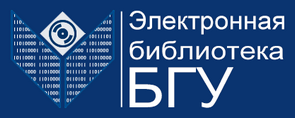Пожалуйста, используйте этот идентификатор, чтобы цитировать или ссылаться на этот документ:
https://elib.bsu.by/handle/123456789/169010| Заглавие документа: | Influence of oxide matrix on electron transport in (FeCoZr)x(Al2O3)1-x nanocomposite films |
| Авторы: | Svito, I. A. Fedotov, A. K. Saad, A. M. Zukowski, P. V. Koltunowicz, T. N. |
| Тема: | ЭБ БГУ::ЕСТЕСТВЕННЫЕ И ТОЧНЫЕ НАУКИ::Физика |
| Дата публикации: | янв-2017 |
| Издатель: | Elsevier B.V. |
| Библиографическое описание источника: | Journal of Alloys and Compounds. - 2017. - Vol. 699. - P. 818 - 823 |
| Аннотация: | Electron transport in (Fe0.45Co0.45Zr0.10)x(Al2O3)1-x granular nanocomposites (NCs) produced by the ion-beam sputtering of compound target was studied in the temperature range of 2–300 K. Conductivity of the films synthesized in the inert (Ar) atmosphere is determined below percolation threshold by the thermally activated electron tunneling over metallic granules at low temperatures and replaced by the Mott variable range hopping (VRH) with increasing temperature. Introduction of oxygen to the sputtering chamber suppresses VRH leading to retention of the thermally activated tunneling in the whole studied temperature range for the metallic phase atomic concentrations up to х = 0.62. The model of thermally activated tunneling over metallic granules gives an excellent agreement with experimental data when alumina matrix permittivity is considered as increasing with concentration of the metallic phase fraction in the films, which is due to increase in number of localized electronic states. The established influence of the sputtering atmosphere on the electron transport in nanocomposites is explained by reduction of concentration of the defects in matrix when oxygen is added to the sputtering atmosphere. |
| URI документа: | http://elib.bsu.by/handle/123456789/169010 |
| ISSN: | 0925-8388 |
| Располагается в коллекциях: | Кафедра физики твердого тела и нанотехнологий (статьи) |
Полный текст документа:
| Файл | Описание | Размер | Формат | |
|---|---|---|---|---|
| Influence of oxide matrix on electron transport in (FeCoZr)x(Al2O3)1-x nanocomposite films.pdf | 1,74 MB | Adobe PDF | Открыть |
Все документы в Электронной библиотеке защищены авторским правом, все права сохранены.

